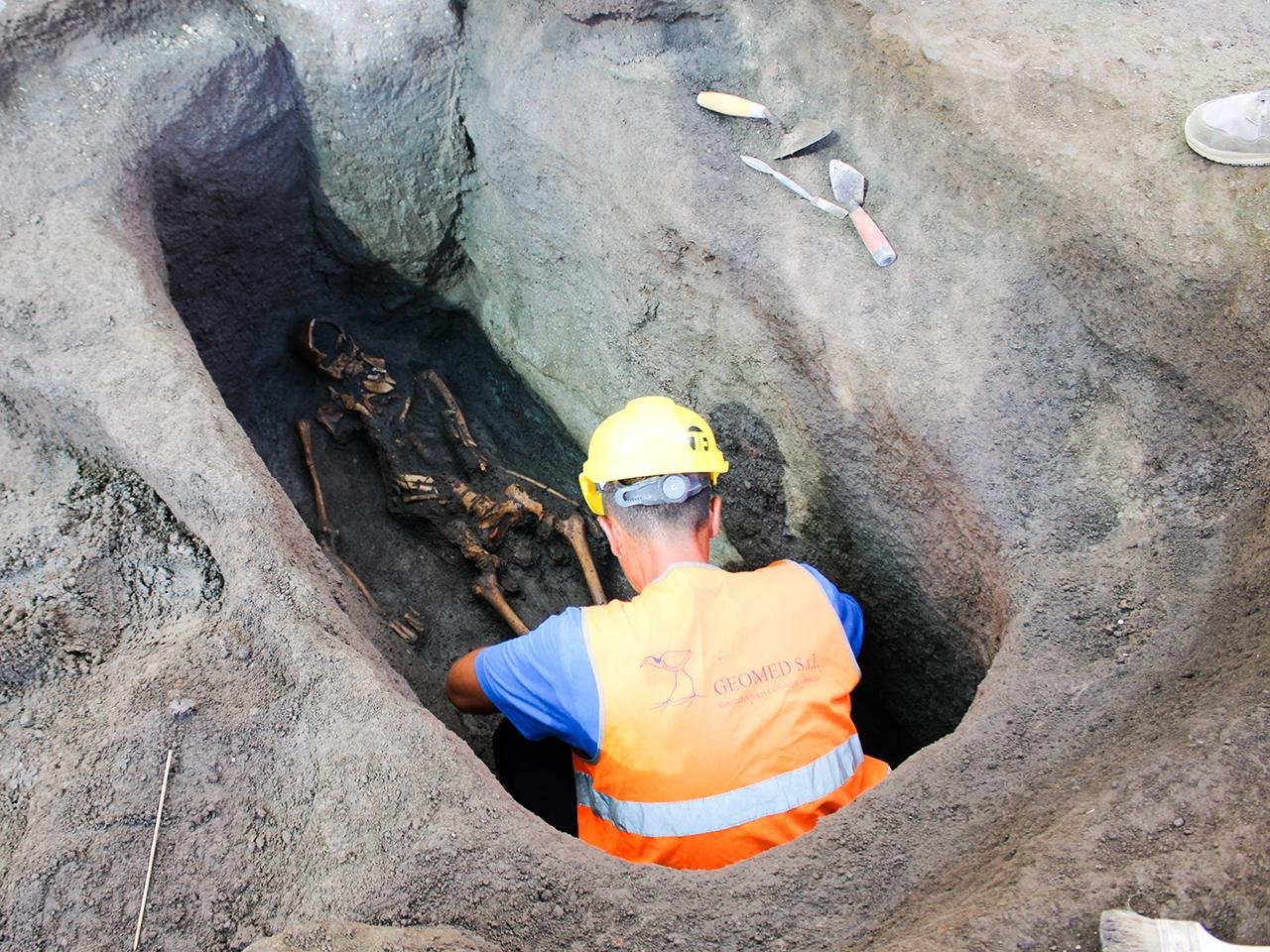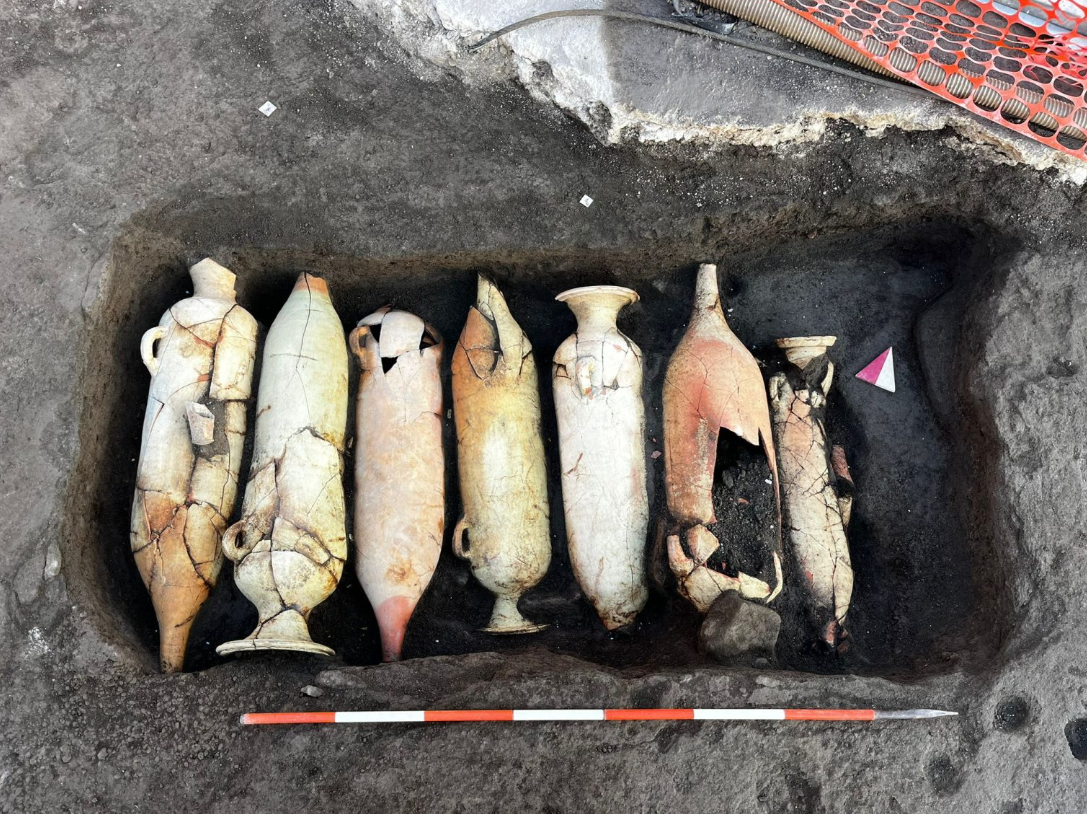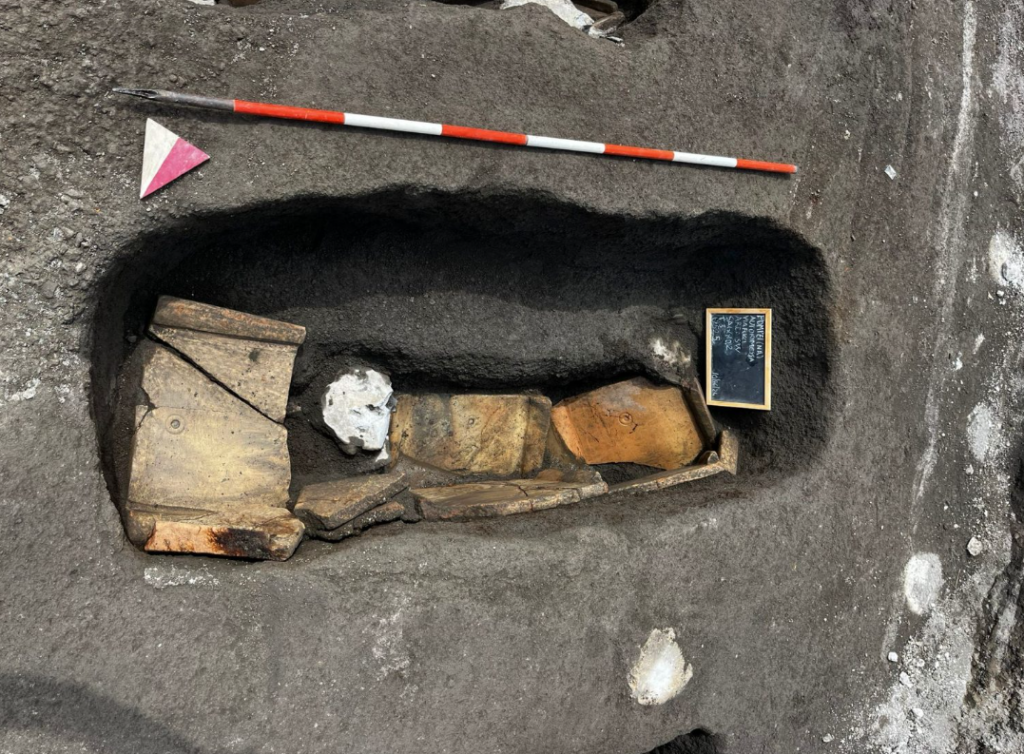Archaeological digs in Pompeii have revealed a noteworthy pre-Roman necropolis that dates from the 3rd to the 1st centuries BCE. This significant discovery, which includes graves adorned with amphorae, was made during the construction of an underground parking facility near the Pompeii Santuario railway station. The necropolis was located approximately a quarter mile from the eastern boundary of the Roman city during modernization efforts on the railway line and the parking garage on Via Fucci.

Supervised by the Superintendence of Archaeology, Fine Arts and Landscape for the Naples Metropolitan Area, the site has uncovered 35 earthen pit burials. These graves, characterized by their straightforward design, feature amphorae placed alternately neck-to-tip. Importantly, these amphorae, sourced from North Africa, bear makers’ marks in the Punic language, also referred to as Carthaginian.
The burial site’s closeness to groundwater has remarkably preserved the skeletal remains, enabling thorough paleo-anthropological studies. The graves contain minimal funerary items, such as small ceramic bottles (unguentarians) and various coins, indicative of the modesty of the burials.

Further investigations have identified additional pre-Roman artifacts within a nearby canal, likely linked to obliterated funerary contexts. This collection includes hundreds of tile fragments, preserved wooden objects, amphorae, and dolia—large storage vessels. Among the remarkable discoveries are 20 small columns made of volcanic stone, tiles inscribed with Oscan text, and a stone head of a woman crafted from grey Campanian tufa, still displaying traces of red paint.
Archaeologists speculate that the canal was built after Sulla’s siege of Pompeii during the Social War (91–87 BCE), a conflict involving the Roman Republic and several of its autonomous allies, including Pompeii. The siege resulted in significant territorial reorganization and city reconstruction, as evidenced by the artifacts uncovered in the canal.

In addition to the necropolis, excavations have revealed remnants of a Roman-era agricultural system buried beneath pumice from the 79 CE eruption of Mount Vesuvius. This system features furrows and pits arranged in a north-south orientation, situated near the ancient Sarno River. These fields were likely utilized for vegetable cultivation, providing fresh produce for the markets and households of Roman Pompeii. Preliminary analyses of organic remains and pollen indicate that perennial artichokes may have been among the crops grown in these areas.

This excavation is part of a larger initiative in preventative archaeology, prompted by construction activities in historically significant regions. An official from the Superintendence noted, “Thanks to preventive archaeology and the collaborative efforts between the Superintendency, the Municipality, and EAV, we are achieving significant results in preserving and enhancing this area of immense historical and archaeological value.

